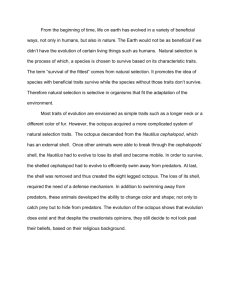Introduction
advertisement
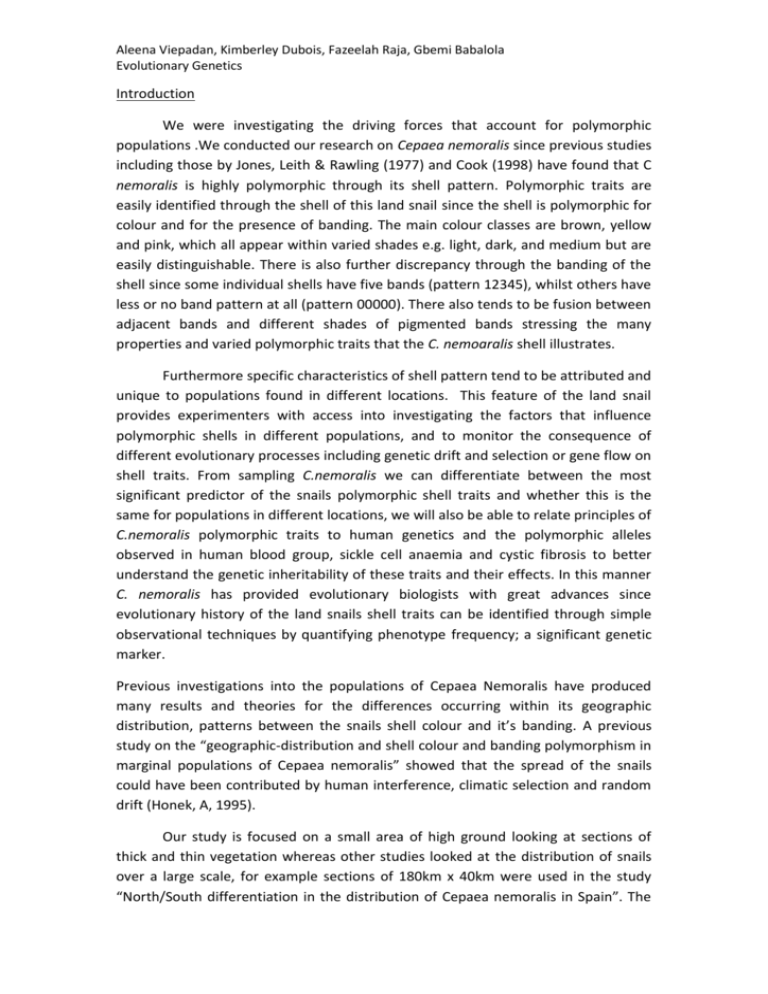
Aleena Viepadan, Kimberley Dubois, Fazeelah Raja, Gbemi Babalola Evolutionary Genetics Introduction We were investigating the driving forces that account for polymorphic populations .We conducted our research on Cepaea nemoralis since previous studies including those by Jones, Leith & Rawling (1977) and Cook (1998) have found that C nemoralis is highly polymorphic through its shell pattern. Polymorphic traits are easily identified through the shell of this land snail since the shell is polymorphic for colour and for the presence of banding. The main colour classes are brown, yellow and pink, which all appear within varied shades e.g. light, dark, and medium but are easily distinguishable. There is also further discrepancy through the banding of the shell since some individual shells have five bands (pattern 12345), whilst others have less or no band pattern at all (pattern 00000). There also tends to be fusion between adjacent bands and different shades of pigmented bands stressing the many properties and varied polymorphic traits that the C. nemoaralis shell illustrates. Furthermore specific characteristics of shell pattern tend to be attributed and unique to populations found in different locations. This feature of the land snail provides experimenters with access into investigating the factors that influence polymorphic shells in different populations, and to monitor the consequence of different evolutionary processes including genetic drift and selection or gene flow on shell traits. From sampling C.nemoralis we can differentiate between the most significant predictor of the snails polymorphic shell traits and whether this is the same for populations in different locations, we will also be able to relate principles of C.nemoralis polymorphic traits to human genetics and the polymorphic alleles observed in human blood group, sickle cell anaemia and cystic fibrosis to better understand the genetic inheritability of these traits and their effects. In this manner C. nemoralis has provided evolutionary biologists with great advances since evolutionary history of the land snails shell traits can be identified through simple observational techniques by quantifying phenotype frequency; a significant genetic marker. Previous investigations into the populations of Cepaea Nemoralis have produced many results and theories for the differences occurring within its geographic distribution, patterns between the snails shell colour and it’s banding. A previous study on the “geographic-distribution and shell colour and banding polymorphism in marginal populations of Cepaea nemoralis” showed that the spread of the snails could have been contributed by human interference, climatic selection and random drift (Honek, A, 1995). Our study is focused on a small area of high ground looking at sections of thick and thin vegetation whereas other studies looked at the distribution of snails over a large scale, for example sections of 180km x 40km were used in the study “North/South differentiation in the distribution of Cepaea nemoralis in Spain”. The Aleena Viepadan, Kimberley Dubois, Fazeelah Raja, Gbemi Babalola Evolutionary Genetics results from this study suggested that the differences between the snails were due to climatic selection acting on the snails. (Mazon, L.I et al, 1988) To obtain our results, we decided to narrow down our variables in terms of environment. We chose to sample from thin vegetation and thick vegetation on higher ground. Initially sampling was to be higher ground versus lower ground. However it became apparent that the potential variation between thin and thick vegetation was not widely carried out, influencing the group’s decision. In order to reduce chance amongst our results, 4 sites of thin vegetation was a selected and 4 sites of thick vegetation. This way we also have a substantial collection of results to draw conclusions from. For each site we aimed to collect between 25 and 30 snails so that after all the repeats we have a significantly large sample population. Therefore an accurate statistical test can be used to analyse the results. The aim of our experiment is to determine whether there will be a difference in the sizes of the sample populations of the different coloured snails between thick vegetation and thin vegetation on high ground. Our null hypothesis for our experiment is there will not be a significant difference in the sample populations of different coloured snails between thick vegetation and thin vegetation samples on high ground.
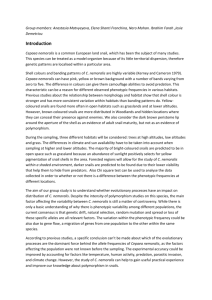
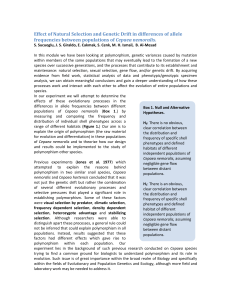
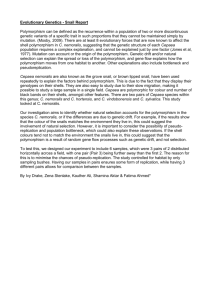
![Evo_Gen_Group_Introfinal_draft_[1.2]](http://s3.studylib.net/store/data/006798616_2-2ab0c6a2225107e0fac598a2105db405-300x300.png)

